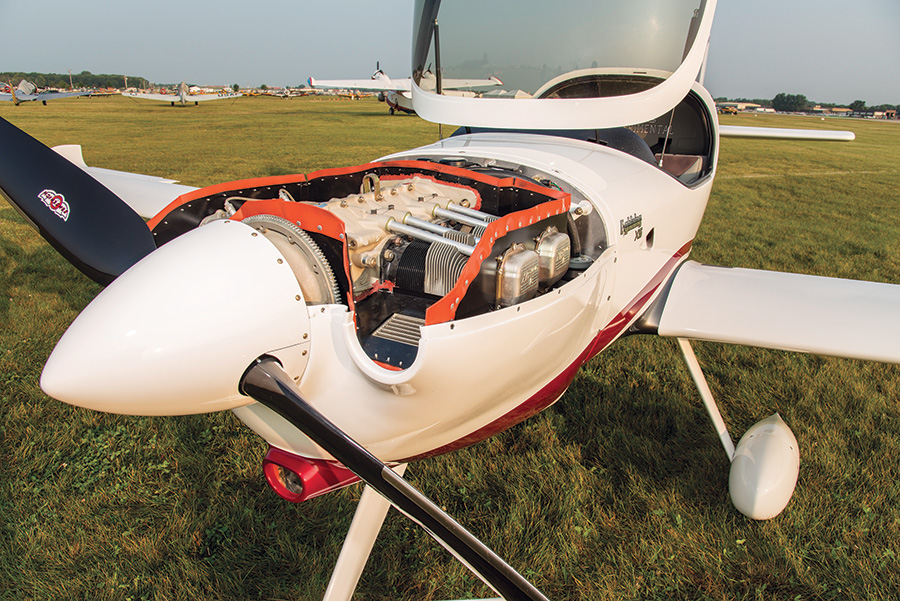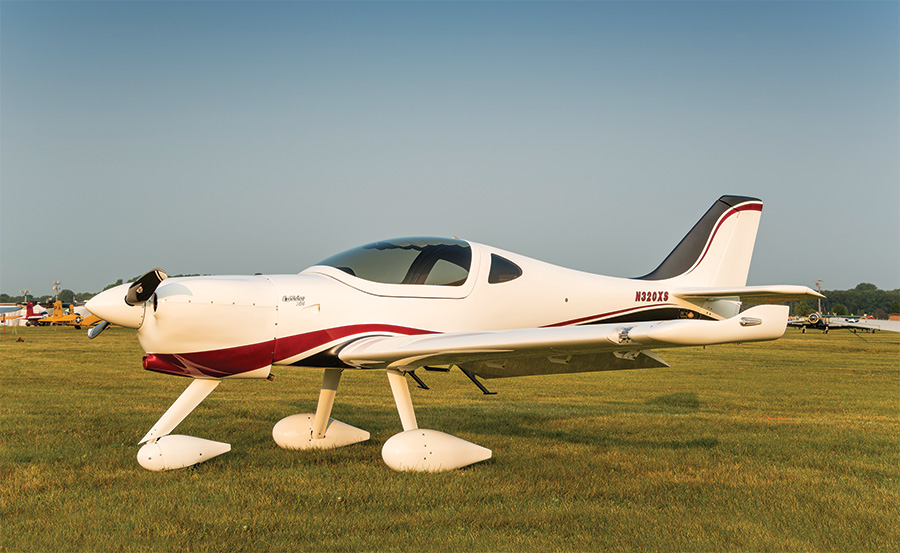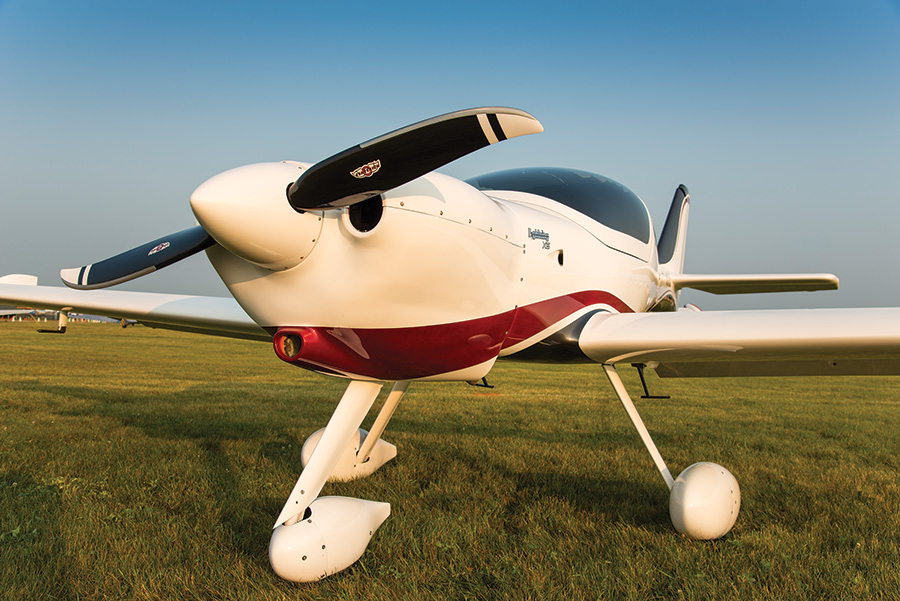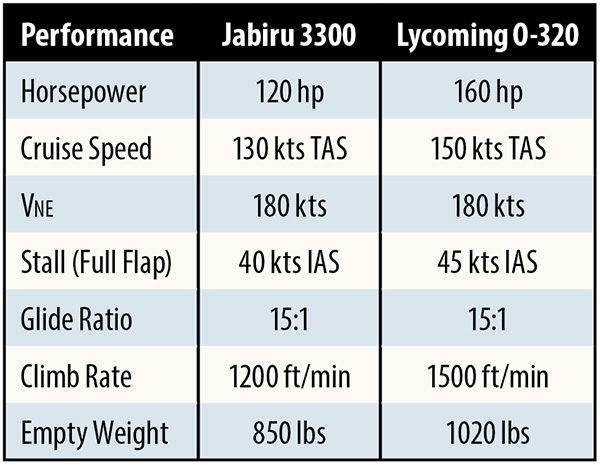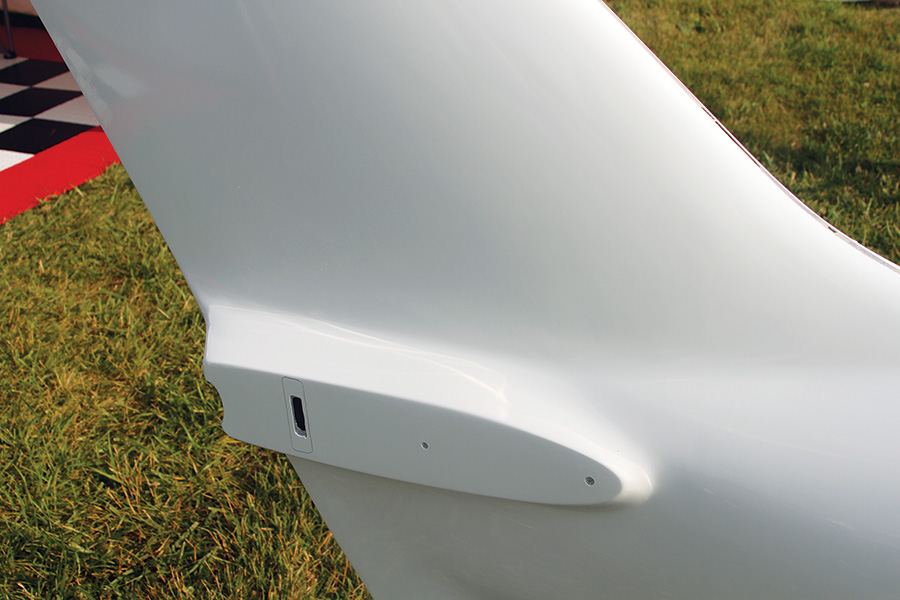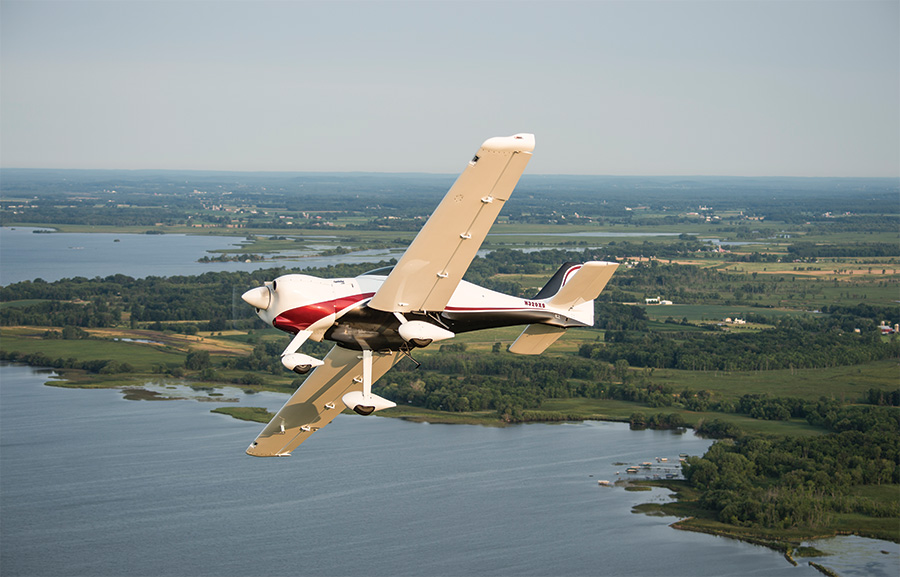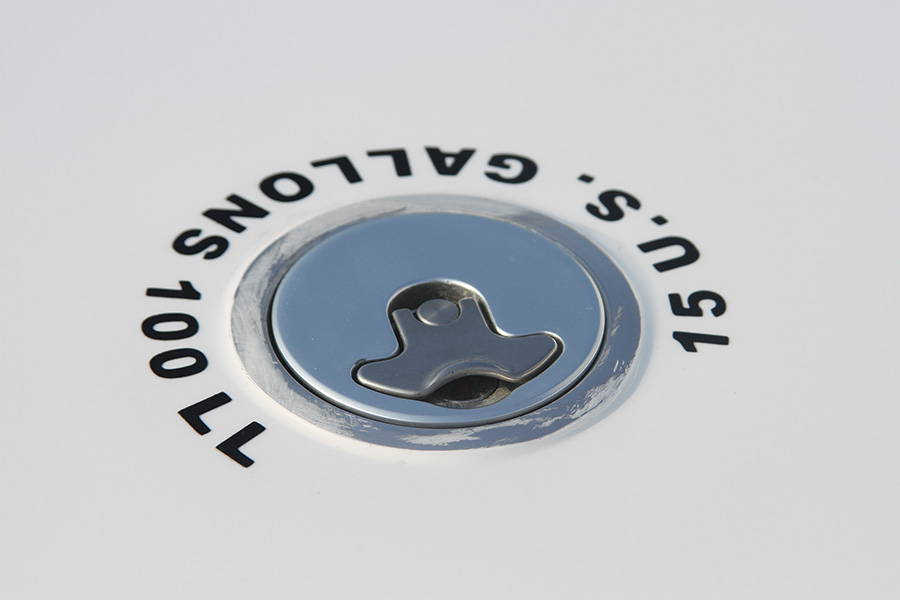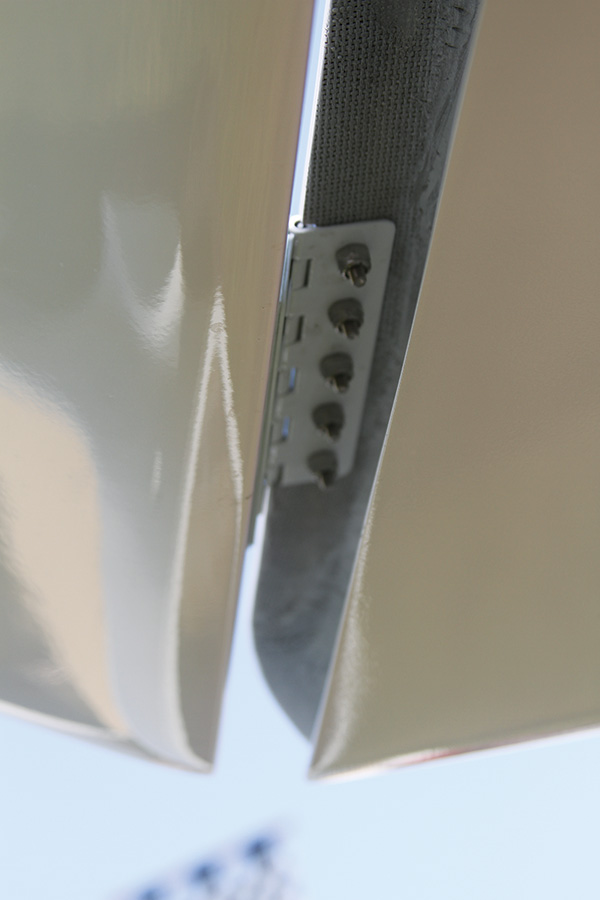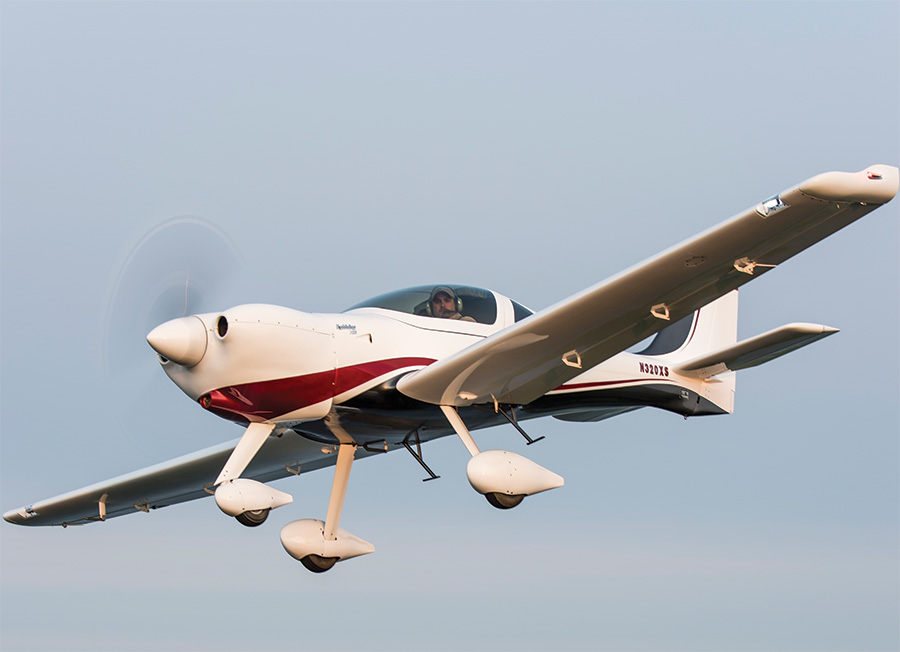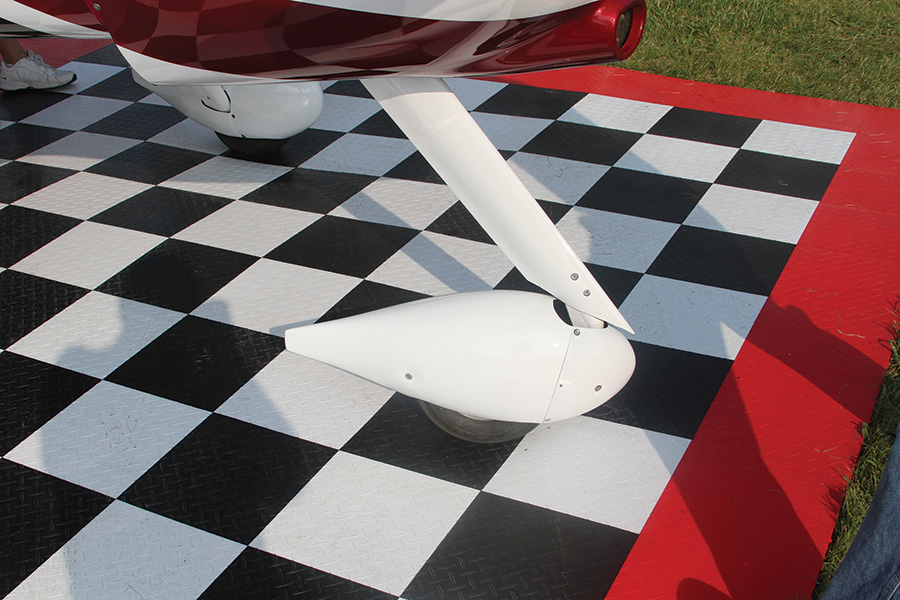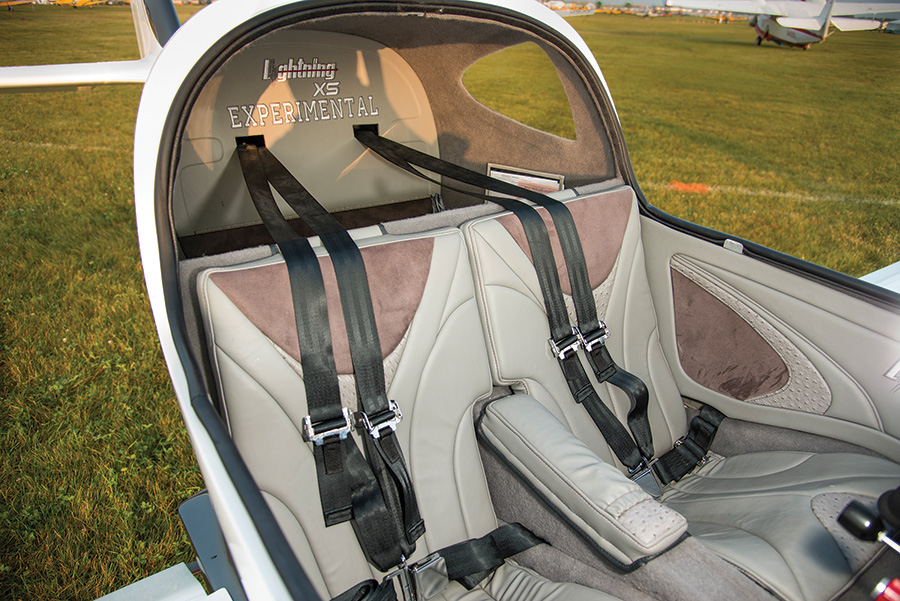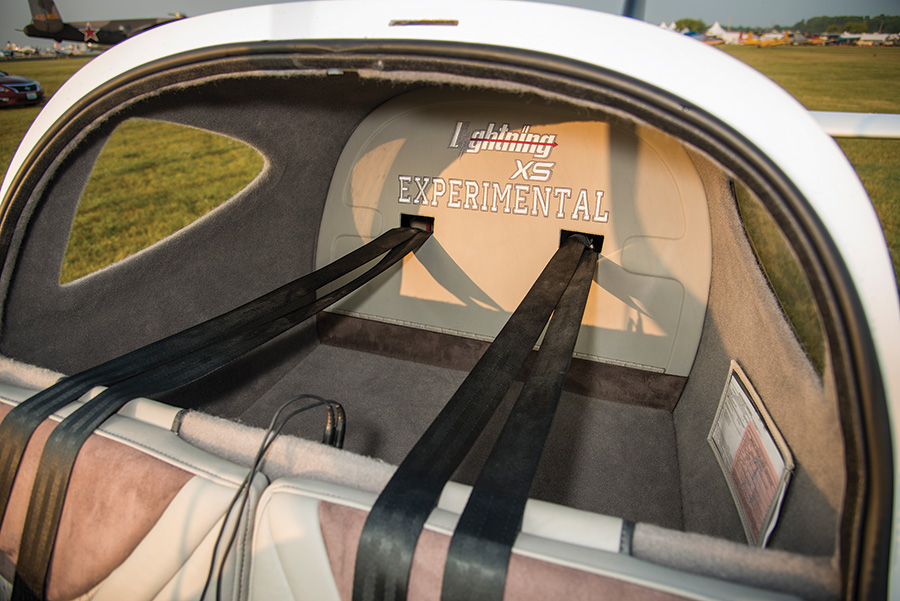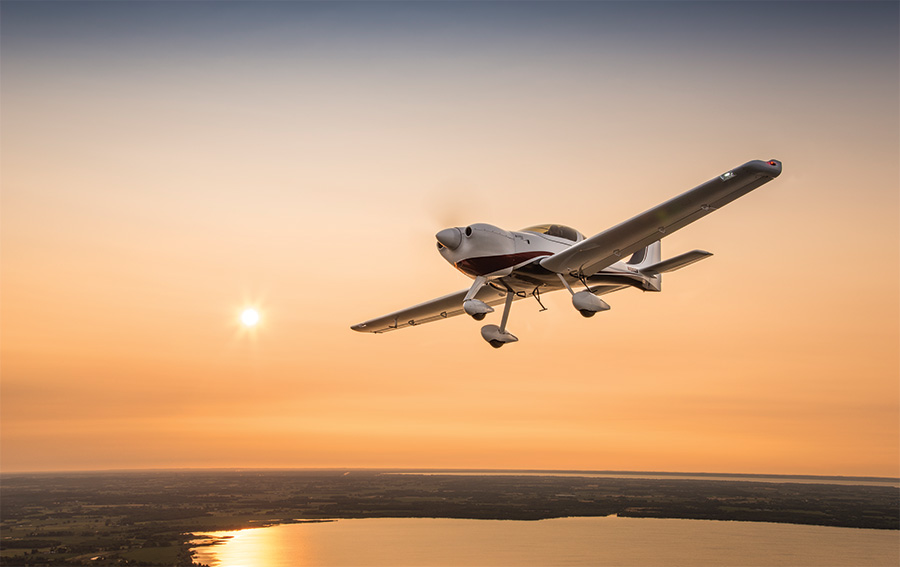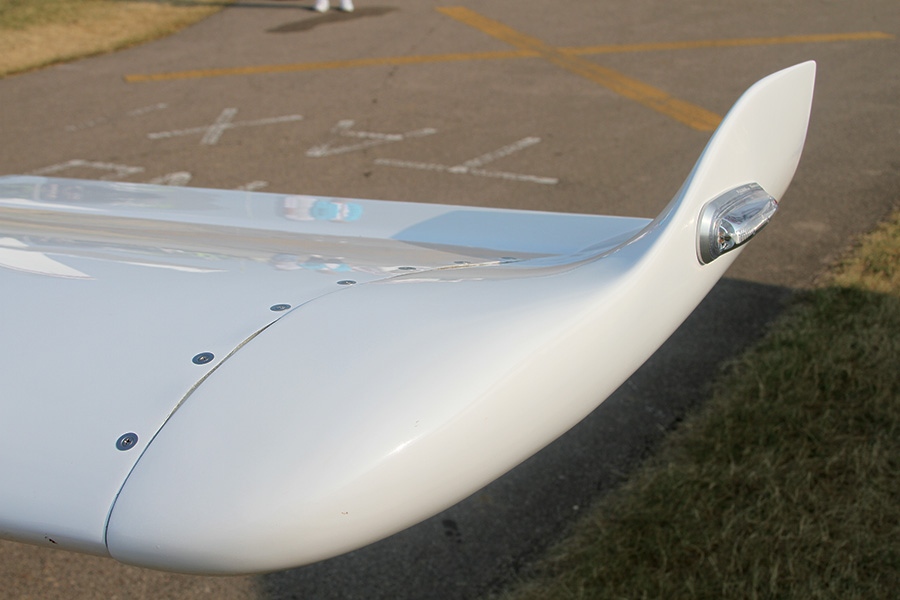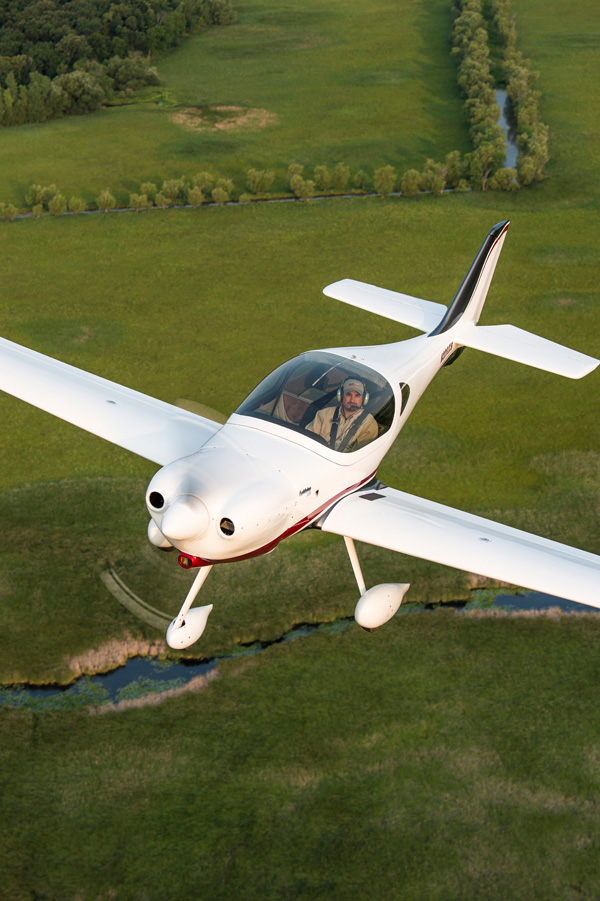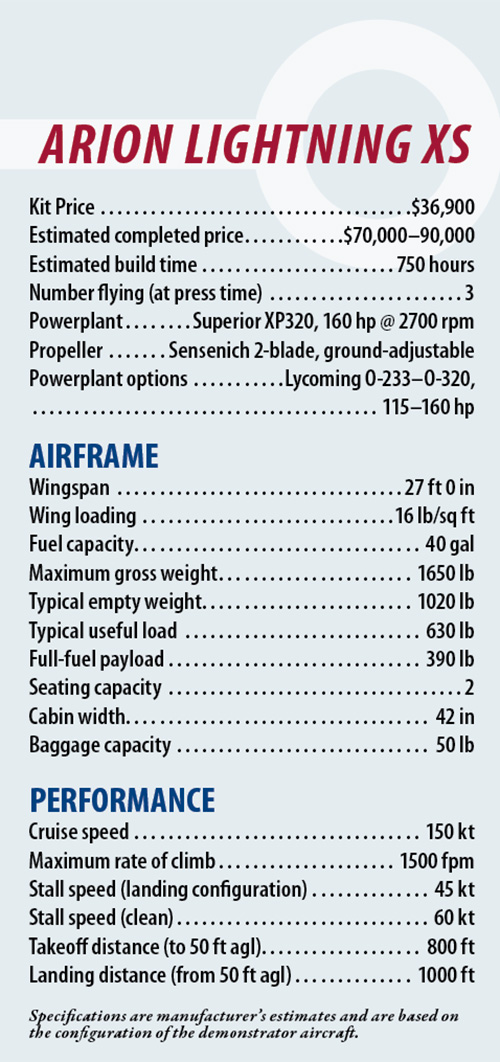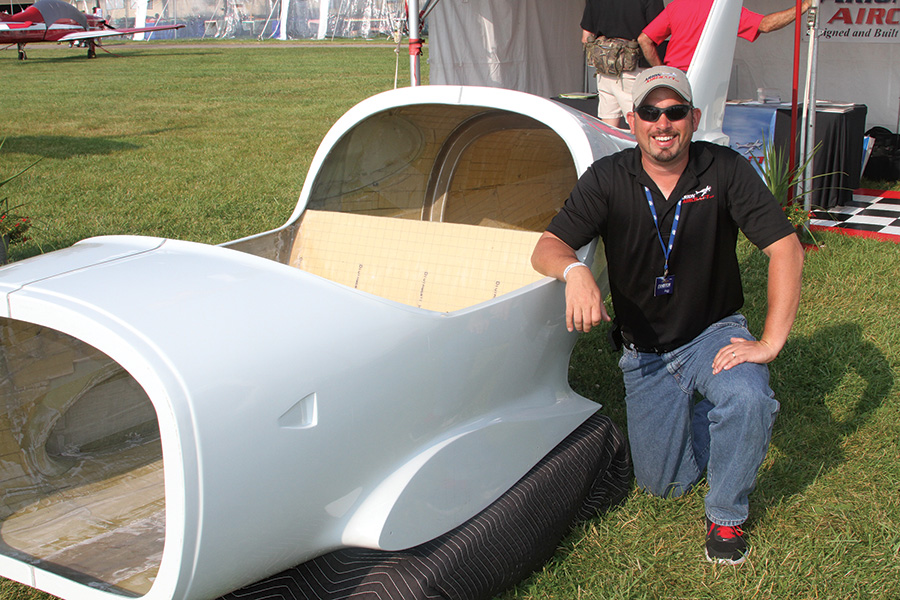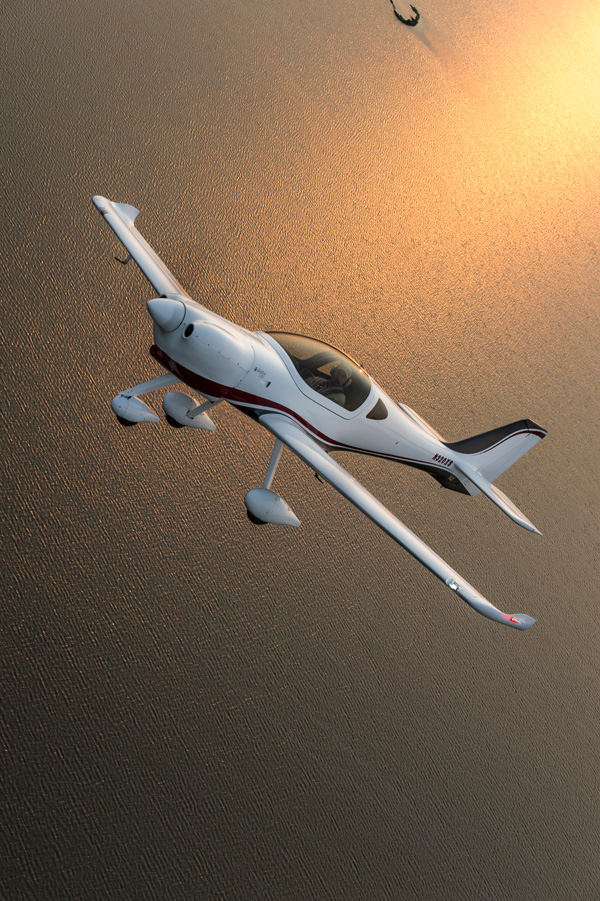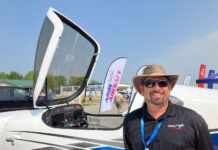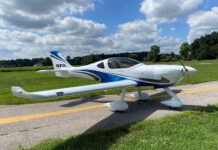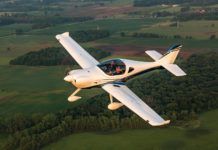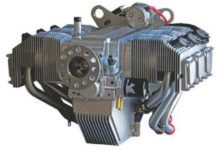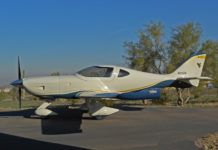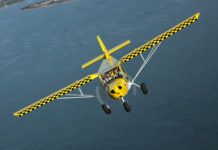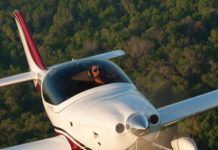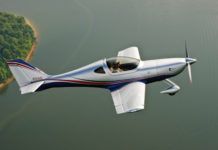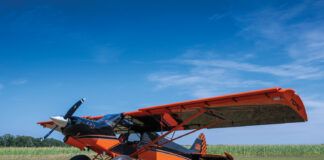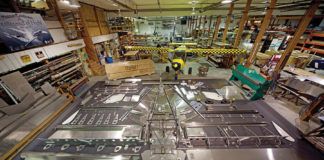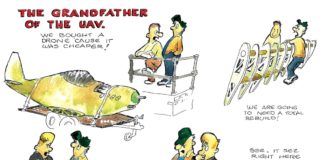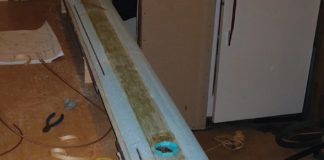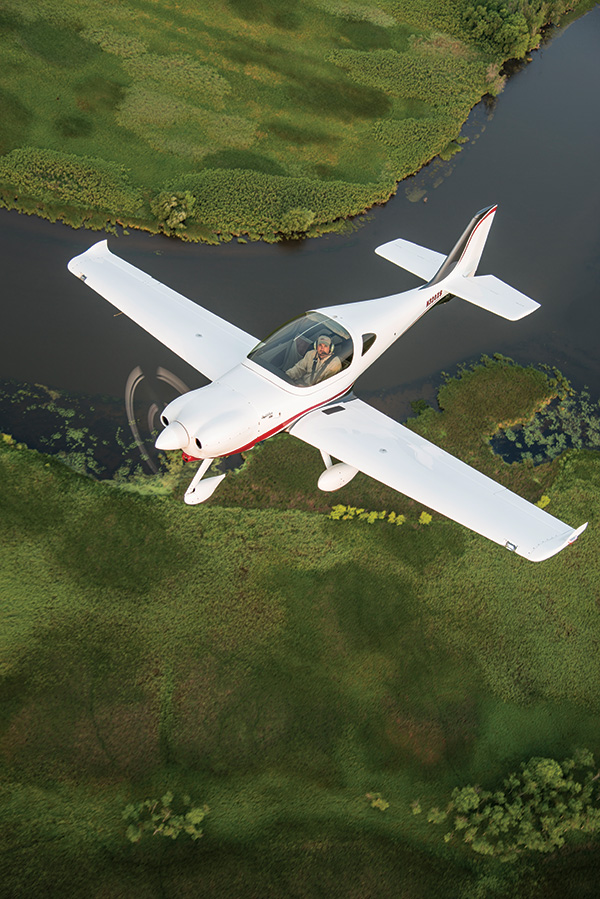 What do you get when you combine a sleek Light Sport with a Lycoming O-320? A sport plane with great visibility, good handling—and guts! The popular Arion Lightning LSA, successful with a Jabiru engine, serves as the basic platform for an upgraded, faster, and sportier composite aircraft that will undoubtedly find its way into hangars across the world in years to come. With careful attention to detail, designer Nick Otterback offers an airplane for those who want to take their flying experience to the next level with a dependable, proven engine that is familiar to A&P mechanics everywhere. The airplane made its public debut in Lakeland, Florida, at Sun ‘n Fun in 2014, but Otterback was still tweaking carburetion and cooling at the time, so Kitplanes got the chance to try out the new craft at Oshkosh, shortly after it graduated from Phase 1 testing at Arion’s home base in Tennessee. Bottom line—the aircraft delivers what it promises, and builders have begun to place their orders.
What do you get when you combine a sleek Light Sport with a Lycoming O-320? A sport plane with great visibility, good handling—and guts! The popular Arion Lightning LSA, successful with a Jabiru engine, serves as the basic platform for an upgraded, faster, and sportier composite aircraft that will undoubtedly find its way into hangars across the world in years to come. With careful attention to detail, designer Nick Otterback offers an airplane for those who want to take their flying experience to the next level with a dependable, proven engine that is familiar to A&P mechanics everywhere. The airplane made its public debut in Lakeland, Florida, at Sun ‘n Fun in 2014, but Otterback was still tweaking carburetion and cooling at the time, so Kitplanes got the chance to try out the new craft at Oshkosh, shortly after it graduated from Phase 1 testing at Arion’s home base in Tennessee. Bottom line—the aircraft delivers what it promises, and builders have begun to place their orders.
It’s the larger Lycoming O-320 that turns the LSA Lightning into the Lightning XS, but the 160-hp UL Power engine is also available.
Continuous Improvement
When Kitplanes’ Chuck Berthe flew the original Lightning for a flight review in 2008, he had reservations about the light stick forces in pitch. Designer Nick Otterback, intent on receiving and acting upon good feedback, took that review to heart and made a number of improvements that moved the CG of the aircraft forward, improving longitudinal stability and the overall feel of the aircraft. Berthe was impressed the second time around, and sales of the kit kept Otterback’s company going as he continued to look for ways to make the craft better yet.
In 2012, then Editor at Large, Marc Cook once again caught up with Otterback who had more good news—he had increased the tail area of the airframe to further enhance pitch stability. Cook flew the improved airplane and reported that indeed, pitch stability was more positive, with quick recovery to a trimmed speed compared to the earlier airframe with the smaller tail. Cook was favorably impressed with the airplane as an LSA, and noted that it looked like a much higher performance plane, but built to fly within Light Sport parameters with the 120-hp Jabiru engine.
Not satisfied in just providing a sexy-looking Light Sport, Otterback took the next obvious step—he increased the horsepower by building yet another version, this time centered around the old reliable 160-hp Lycoming O-320. The new version—known as the Lightning XS—has outgrown the LSA category to provide an airplane for those who want a bit more—more power, more climb, and more speed. Adding 40 horsepower makes a big difference, and we think that those looking for an affordable-to-operate, fun, two-place airplane will be pleased.
Constant improvement is the mark of a good company with a solid designer at its helm. Otterback understands that you need to grow to survive—not just financially, but technically. Berthe, Cook, and now myself were all impressed that while we were flying Otterback’s latest, he was already talking about tweaks and changes that he would be making to improve the design yet again. Builders and buyers can expect more improvements as time rolls forward, yet they can also be comfortable knowing that each existing incarnation is a good, solid airplane that will perform as promised. Arion can get you into a Lightning at several different levels, and all are solid, safe designs.
Going to XS
The XS design grew out of the original Lightning LSA and, to many, appears almost identical from the outside. Much of the kit is the same, but the XS features beefed-up forward-fuselage structure to support heavier and more powerful engines, longer landing gear to give clearance for bigger props, and bigger brakes to give more taxi control and better stopping power. While the prototype sports a 160-hp O-320, the airframe also supports lower-powered Lycomings from the O-235 family (which share a common motor mount and general dimensions with the O-320) or the UL Power family of engines from 130-160 hp. At the time of this writing, the UL Power version has been flying for about 15 hours, and Arion reports good performance with a standard prop—but they are looking for a prop that will extract better results from the higher-revving engine.
The cowl is shaped to fit the larger Lycoming O-320 on the Lightning XS. Otterback reports that the UL Power engine requires little change to the cowl over the Jabiru version.
Let’s Compare
It is easy to compare the Jabiru-powered Lightning to the XS model using factory-supplied performance data. The airframe specifications remain virtually unchanged, with identical dimensions, fuel capacity, and gross weights (in the standard category). The empty weight of the XS is, however, considerably higher (based on percentage), and this reflects the traditional mass of the good old Lycoming. One of the major improvements of newer engine designs (such as the Jabiru) is the decrease in weight over traditional engines. This additional weight is reflected in the performance numbers. As you would expect, adding 40 horsepower increases both speed and climb. But for those not familiar with aircraft design equations, you don’t get as much of either as you might think when going to a bigger motor.
Although it doesn’t snap together quite as quickly as a model airplane, the Lightning’s pre-molded parts will remind many homebuilders of projects of their youth.
Speed is hard to get in an airplane; the drag increases with the square of the velocity, so gaining a few knots in the low end of the range is simple. But knots at the top end are far more costly in terms of power. So while the Lycoming is providing 40 more ponies than the Jabiru, you don’t see a proportional increase in speed—you get a fraction of that. The clean lines of the Lightning airframe make it fast already with the smaller engine, so trying to increase speed with horsepower is that much more difficult. Yet the Lightning is seeing an increase of 20 knots at cruise—a healthy gain.
Climb rate, on the other hand, is directly proportional to excess horsepower. Excess horsepower is the horsepower available that is over and above that required to maintain level flight in a given condition. If you up the horsepower of an existing engine by increasing compression ratio or some other means that does not increase overall weight, the increase in rate of climb can be phenomenal. For instance, many owners of the old Grumman Yankee replaced the original 100-hp O-235 with a similarly-sized O-320, increasing the excess power available at sea level by 60 hp, but gaining only about 35 pounds in weight. This took the little bug from an anemic 300 fpm climb on a hot day to something more like 1500 fpm.
Looking at the empty-weight increase of the Lightning, we see a jump from 850 pounds for the Jabiru-equipped plane to 1020 pounds with the Lycoming versions. Since the airframes appear virtually identical, that increase is mostly in the powerplant (and beefed up structure to support the extra power), and it is not insignificant. That’s the reason that you see a modest increase in climb rate with the bigger engine—from 1200 fpm to 1500 fpm. For pilots transitioning from traditional certified two-seaters, either of these numbers is going to be astounding. But for those going from the Jabiru to the Lyc, they might wonder why they don’t have that rocket-ship feel they might have expected from 40 more horsepower. Don’t get us wrong though—it is always nice to get more climb rate, especially on hot days in the mountains.
The cockpit of the Lightning XS is modern conventional—there is plenty of room in the panel for whatever the builder might reasonably desire.
Building the Lightning
The Lightning is a composite airplane with a pre-welded steel structure in the belly that ties together the landing gear and spar attach structures. The major components of the control system are rooted in this structure, as are the supports for the instrument panel. This provides a firm foundation for the homebuilder and ensures that relative placement of critical components is accurate, allowing easy assembly. The major composite components are all pre-formed for Arion by a subcontractor (Fiberglass Molding of Weyauwega, Wisconsin), and the builder can start with something that looks very much like an airplane, right out of the box. The XS has a different cowl to enclose the larger Lycoming engine, but aside from that, it is hard to tell the difference between it and its LSA forebears at a distance. The composite used is a vinylester resin, rather than epoxy, chosen by Otterback for its strength and light weight.
The XS we flew holds 15 gallons of fuel per side. Current kits hold 20 gallons per side for a total of 40 gallons, with 38 usable. Unlike the old tanks, the new tanks are removable for servicing.
For those who want a little extra help assembling their Lightning, Arion provides a factory builder assist program in which the builder can go to Arion to do the major work on their aircraft under the studied eyes and tutelage of factory personnel. This speeds up completion time appreciably and helps ensure that the finished aircraft is up to factory standards. For those who prefer a more western climate and location, the same experience can be had at Lightning Aircraft West, located in Marana, Arizona (between Tucson and Phoenix).
Of course, the standard kit is designed to be shipped to the builder’s home workshop and completed using the parts and manuals provided by the company without any factory assistance at all. There is nothing unusually complex about the Lightning. It uses standard aircraft construction techniques and AN hardware, resulting in a solid, reliable flying machine.
The elevators use simple, top-mounted hinges to attach them to the stabilizer. Control feel is quite good.
Let’s Go!
An early July morning is a great time to fly in Wisconsin, Otterback’s home state. The air is smooth, temperatures are moderate—and if you are flying out of Whitman Field during AirVenture, the traffic is lightest before the many arrivals start flooding in from Ripon after breakfast. We easily pushed the Lightning XS out of its display booth to the demo flight line as the sun was coming up and didn’t have to wait long before we were strapped in and ready to join the short conga line headed to runway 27 for departure.
The airframe provides very comfortable seating for two, along with excellent visibility through the large canopy. The prototype we flew was well appointed and felt much like a production aircraft. It had none of the signs of a prototype, and the seats were quite comfortable. As with most composite aircraft, the smooth and curvaceous lines continued from outside to inside, and the seats were nicely contoured. Controls fell easily to hands and feet, and we never felt like we had to reach for anything to completely control the airplane. Complete dual controls were standard, and like most sport planes, pitch and roll is controlled with a stick—in the Lightning’s case a deeply curved stick to allow a nice position of the grip close to the body. Standard brakes and rudder pedals and a push-pull throttle complete the flight controls.
The factory demonstrator/prototype was equipped with a single Dynon SkyView screen for flight and engine instruments, standby altitude and airspeed, and a TruTrak ADI backup attitude indicator. A Garmin 796 mounted in an AirGizmo recessed panel was installed in front of the passenger seat, and a Garmin SL40 in the center of the panel served all the communications needs. More than adequate ventilation was provided by an eyeball vent for each seat, circuit breakers were on the right, and the fuel selector was within easy reach on the center console underneath the throttle and mixture.
The aircraft carries 15 gallons (new kits hold 20 gallons) of fuel in each wing, more than enough for local flying with the O-320, and plenty for reasonable VFR cross-country cruising. Leaned beyond peak, that should give an ultimate endurance of about four hours—and after that, you’ll probably want to take a break to stretch your legs anyway. The wings end in small winglets, each mounting an LED nav light/strobe for efficient and effective recognition and night lighting. The almost-industry-standard full-swivel nosegear provides for tight turns on the ground and seems to be quite rugged. Ground steering is, of course, provided by differential braking and proved to be more than adequate for good control.
The free-castering nosewheel is typical of small tricycle-gear homebuilts and provides tight maneuvering on the ground using differential braking.
Taxi
Engine start was as normal as it gets in a Lycoming-equipped airplane: set the knobs, hit the button, and away it goes. We picked up the ATIS and a flagman, and then headed toward the runway. Steering with differential brakes, the nosewheel appeared just a little twitchy. Otterback blamed this on a higher-than-normal breakout force for the swiveling nosegear that creates a tendency to overshoot. It didn’t hamper our ability to get to the runway, but it is something that Arion was planning on adjusting as they work to refine the prototype.
Visibility was good as we kept an eye on flagmen and traffic, and the runup and cockpit checks were routinely completed as we approached the runway. Oshkosh is a place where it helps to have two pilots in the cockpit so one can drive while the other completes the checklist—that way, you are ready to go when you reach the threshold and the flagman doesn’t have to wait on you doing a runup and configuring for takeoff. There was nothing on the checklist that would surprise anyone trained on single-engine Lycoming-equipped aircraft, and we latched the canopy as the last thing to do as we were given takeoff clearance and pointed the nose west.
You’re not going to carry two weeks’ worth of luggage in the XS, but for weekend trips, the baggage compartment should do fine.
Takeoff
With the extra weight of the heavy engine on the nose, it took a little bit of a tug to raise the nose at rotation speed. We should have figured this out by inspection before the first time down the runway, but we had it nailed the second time around. The aircraft tracks straight and true, with little control needed to keep it headed down the centerline stripe. Acceleration was excellent, and rudder control was available almost immediately, so once you start pushing in the throttle, you can quit tapping the brakes and slide your feet down to the rudder pedals.
Initial climb was good, if not rocket-like, but to pilots raised on certified singles or Light Sport Aircraft, it will more than satisfy. As we climbed out of Oshkosh and headed out over the cranberry bogs of Wisconsin, I noted that the visibility was good, but I still made some gentle S-turns to help see past the nose. This was, after all, AirVenture week, and even in the morning, the sky around Oshkosh could be filled with airplanes. The controls were nicely harmonized between axes, making any kind of maneuvering a pleasure. Roll stability was excellent, enhanced (according to Otterback) by the small tip-sails that served as wingtips. Not only do they make the airplane look more exciting, they improve its handling qualities as well.
How Stable?
Since one of the design evolutions of the Lightning has been its pitch stability, we were curious to see how it felt relative to reports of the earlier models. As one would expect, adding more engine does two things: It adds weight, and it adds it forward of the previous center of gravity. As you move the CG forward, pitch stability increases, and so it did with the Lightning XS. We found the XS to be solid in pitch—something we expected after noting the positive rotation required for takeoff. Being “positive” in pitch should in no way be taken to be detrimental. The airplane felt solid and stays where you put it, but at the same time is pleasant and not heavy on the controls.
As airplanes increase in speed and performance due to horsepower increases, we expect them to feel more solid. Unless our goal is all-out racing speed, we tend to use faster airplanes for transportation, and having them stay where we put them as we dig for a map or a bottle of water in the footwell is a good thing. Airplanes with neutral or negative stability are a lot of work to fly cross-country, and while you can always add the expense of an autopilot to manage that for you, it is nice to have a sport plane that uses good old physics and aerodynamics instead of digital magic to keep things in line.
The Edges of the Envelope
After a few clearing turns, we slowed for a couple of stalls, and the results were wonderfully less than exciting. Adequate pre-stall buffet preceded a benign stall with little break, even in a turn. The airplane was well behaved at slow speeds, with little rudder required to keep the ball centered in power-on slow flight. Speeding up and becoming a little more aggressive, military 8s proved that the airplane is easy to coordinate and happy to oblige a pilot’s playful side. While we didn’t take it upside down, the handling is that of a gentleman’s aerobatics machine—again with no surprises.
The airplane certainly has plenty of power—chandelles gained considerable altitude, and it was obvious that the Lycoming makes this a nice performer, even though it was not designed from the outset as an aerobatic ship. It was easy to hold altitude in steep runs, and showed no tendency to roll in or out of turns uncommanded. In simple terms—it goes where you point it.
And then there’s speed! There is no doubt that the XS makes good use of the horsepower to produce some nice numbers on the airspeed indicator. Arion lists the cruise speed as 150 knots, and Otterback agreed that the number is conservative, but defended it because he doesn’t like to cruise wide open, burning lots and lots of fuel. Neither do we, frankly, and would rather see a realistic cruise speed posted than a number that only the cleanest, lightest VFR ship can produce. Otterback says that while you can run the Lycoming at 2500 rpm or greater all day, he thinks the airframe is the most comfortable down around 2350, or even 2300. It might take an extra 10 minutes for a long trip, but you’ll get there with less vibration and more fuel in the tanks.
Our notes show that the airplane easily did the 150 knots expected, and that is good proof that Arion is posting reasonable numbers. (Harkening back to that old Grumman Yankee with the 160-hp engine, we used to cruise at about 120 knots on the same horsepower, which gives a good indication just how clean the Lightning design really is.)
In the Pattern
After getting our morning exercise, we found ourselves at a sleepy little field about 20 miles from Oshkosh to try some takeoffs and landings. The airplane was easy to slow down, and it flies normally in the pattern, easily trimmed for hands-off speed maintenance with flaps. The sight picture looked normal, and there was plenty of visibility in the flare and touchdown. As we slowed down and taxied back for another go, we noticed a little shimmy in the maingear legs—probably due to their longer length. Otterback said that gear leg stiffeners were on the schedule after Oshkosh, and they expected that to quiet the gear. Like most shimmies I have experienced with rod-type gear, a change of speed—either faster or slower—quieted things down, so even if the stiffeners don’t cure the issue, it can be dealt with easily.
We shot several landings, each one a testament to the natural flying abilities of the Lightning (not necessarily the pilot), then headed back to join the line of aircraft headed to Ripon and back into the show. Once again, the excellent visibility was welcome, and the speed range was such that we had no problem falling in line with the incoming conga line.
Power to the Pilot
In summary, it is hard to argue with any pilot that more power isn’t a good thing (to a point). The Lightning is a good airplane with a Jabiru, but an even better one with a Lycoming. It might prove to be even better with the lighter 160-hp UL Power engine, and we hope to get a chance to bring a report on that version to our readers in the near future. Until then, we think that the Lightning XS should be on the shopping list of anyone looking for a fun, two-seat composite kit. It’s honest, should build easily, and the proven Lycoming is simple, reliable, and well understood just about anywhere you might want to go.


